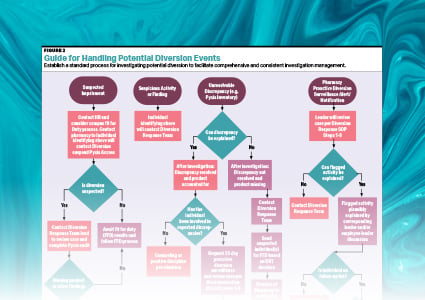- Show Menu
- Contact Us
- FAQs
- Reader Service
- Survey Data
- Survey Winners
- Testimonials
- Upcoming Events
- Webinars
- White Papers
KL-30 & KL-60 by Kirby Lester
Using robots to automate medication dispensing can streamline workflow in the pharmacy and improve medication safety. Automated dispensing also can increase pharmacy staff’s confidence in the accuracy of the dispensing process and in managing controlled substances.
Aultman Hospital, a 682-licensed-bed facility providing cardiovascular, orthopedic, neurology, general surgery, oncology, psychiatric, and general medical services, averages about 7,000 prescriptions each month in its outpatient pharmacy. In addition to the acute care hospital, the outpatient pharmacy at Aultman provides employee, patient assistance, and patient discharge medications, and we are currently developing plans to increase our discharge prescription capture. The pharmacy is open from 6:00am to 6:30pm Monday through Friday so all employees can utilize the pharmacy prior to or after their shifts. Incentives for hospital employees to fill their prescriptions at the outpatient pharmacy include reduced cost and convenience.
The pharmacy was recently moved from a 1,200-square-foot space into an 800-square-foot area in order to consolidate all the retail businesses in the facility, including the gift shop, convenience goods, flower shop, durable medical equipment sales, uniform shop, and breast care boutique. Despite the move to reduced space, the pharmacy was still tasked to increase the volume of discharge prescriptions. Therefore, it became necessary to determine ways to increase storage density, improve throughput, and better ensure patient safety.
An Improved Dispensing System
With the exception of a computerized ordering system, our previous dispensing process was completely manual. Because the manual system was inefficient and did not allow for robust controlled substances management, the decision was made to implement Kirby Lester’s KL-30 and KL-60 automated dispensing robots to streamline and safeguard the dispensing process, eliminate workflow bottlenecks, and improve safety. Ease of use, reliability, and integration with existing pharmacy information systems were major considerations for selecting the KL-30 and KL-60 units, which were implemented in May 2013.
One of our main goals was to utilize the new technology to enable high-volume prescription dispensing. To secure buy-in and financing for the two robots from administration, pharmacy focused on the medication safety benefits. Robotic technology ensures the correct medications are dispensed, preventing potential medication errors. Although some staff members initially expressed skepticism—suspecting that the robots could replace their roles in the pharmacy—employees soon came to appreciate the safety benefits and workflow improvements realized from the technology.

The Benefits of Automation
Our facility has experienced numerous benefits since the implementation of the KL-30 and KL-60 dispensing technologies, including inventory management improvements, reduced waste due to proactive identification of expired medications, and few—if any—controlled substance discrepancies. In addition, we have improved throughput on the most commonly written prescriptions and added additional safety checks throughout the process. Likewise, it is difficult to overstate the benefit of improved medication control and the assurance that the correct product is being dispensed to patients.
Moreover, the bar coding process has increased our confidence in the accuracy of the dispensing robots. The NDC bar code from our information system is integrated with the Kirby Lester devices. The NDC bar code is matched before our technicians refill each of the 60 cassettes on the KL-60 robot for our fast movers, and it occurs at the point of dispensing on the KL-30 counting device for all other medications when our technicians scan the patient label, then scan the manufacturer’s bottle to confirm the match. The technicians are prevented from dispensing the wrong drug, strength or quantity for any order, whether tablet/capsule or unit-of-use medication. If a discrepancy is flagged, the technician can ask a pharmacist to intervene and either re-run the prescription with the correct NDC, or allow the generic substitution.
Adding automation to our medication dispensing has streamlined the process and improved medication safety. Nonetheless, it is important to consider the effects of any automation implementation on pharmacy workflow. For example, following implementation, we realized the initial placement of the KL-30 resulted in unnecessary steps and created a bottleneck in the dispensing process. It was quickly determined that it would be prudent to move the KL-30 to a new location which resolved the problem. Once potential workflow issues are addressed, automated dispensing robots can be a valuable addition to any outpatient pharmacy.
 Jim Toohey, MS, RPh, is the executive director of pharmacy at Aultman Hospital in Canton, Ohio. Jim received his BS in pharmacy from the Ohio State University and an MS in hospital pharmacy from the University of Minnesota. Additionally, Jim participated in an ASHP-accredited residency at United Hospitals in St. Paul, Minnesota.
Jim Toohey, MS, RPh, is the executive director of pharmacy at Aultman Hospital in Canton, Ohio. Jim received his BS in pharmacy from the Ohio State University and an MS in hospital pharmacy from the University of Minnesota. Additionally, Jim participated in an ASHP-accredited residency at United Hospitals in St. Paul, Minnesota.
Like what you've read? Please log in or create a free account to enjoy more of what www.pppmag.com has to offer.








